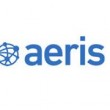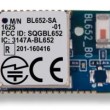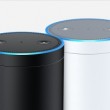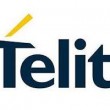

In 2021, there will be more connected devices than there are people on this planet. As the tidal wave of IoT sweeps all corners of society, businesses are rushing to ride the hype with new deployments of smart technology. (more…)
May 8, 2017
Posted by: Avadhoot Patil

Both Cisco and Ericsson forecast there will be approximately 50 billion connected devices in operation globally by 2020. Whatever the exact figure, we can predict one certainty: IoT will play an increasingly dominant role in our lives, redefining them as we know it. (more…)
April 19, 2017
Posted by: Avadhoot Patil

Aeris, has expanded its Neo™ by Aeris® service and streamlined the way businesses can access cellular connectivity that enables them to easily turn their unconnected products into connected devices. (more…)
March 27, 2017
Posted by: Avadhoot Patil

Avnet Silica, an Avnet company, and Trusted Objects, a provider of secure firmware and security services, announced the availability of a new LoRaWAN™ family of secure elements. (more…)
March 1, 2017
Posted by: Avadhoot Patil

Alpha Micro Components has begun distributing a new secure, certified Bluetooth Low Energy (BLE) v4.2 and Near Field Communication (NFC) module, the Laird BL652. (more…)
January 26, 2017
Posted by: Avadhoot Patil

One of this season’s best selling gifts is the Amazon Echo with Alexa. Plug it in and Echo / Alexa will run your house for you: turning on lights, locking / unlocking doors, catering to your family member’s unique climate comfort needs, and reducing your energy bill – all voice activated and without any hard-core programming. (more…)
December 14, 2016
Posted by: Avadhoot Patil

Altair Semiconductor, a provider of LTE chipsets, has announced that its ALT1160 CAT-1 chipset has successfully completed a trial with Raspberry Pi to provide LTE connectivity on the system for the first time. (more…)
December 5, 2016
Posted by: Avadhoot Patil

devolo has added new functionality to its smart home technology range Home Control. The system’s latest update integrates additional software features, making more customer requests possible. (more…)
November 11, 2016
Posted by: Avadhoot Patil

CEVA, Inc., a licensor of signal processing IP for smarter, connected devices, has introduced a new lightweight, multi-purpose, processor IP core to streamline the design of cellular-enabled low data rate industrial and consumer loT devices. (more…)
October 12, 2016
Posted by: Avadhoot Patil

Telit, a global enabler of the Internet of Things (IoT), has announced major updates to their IoT Portal. Now, users can switch network providers on the fly, ensure data continuity, (more…)
September 19, 2016
Posted by: Avadhoot Patil